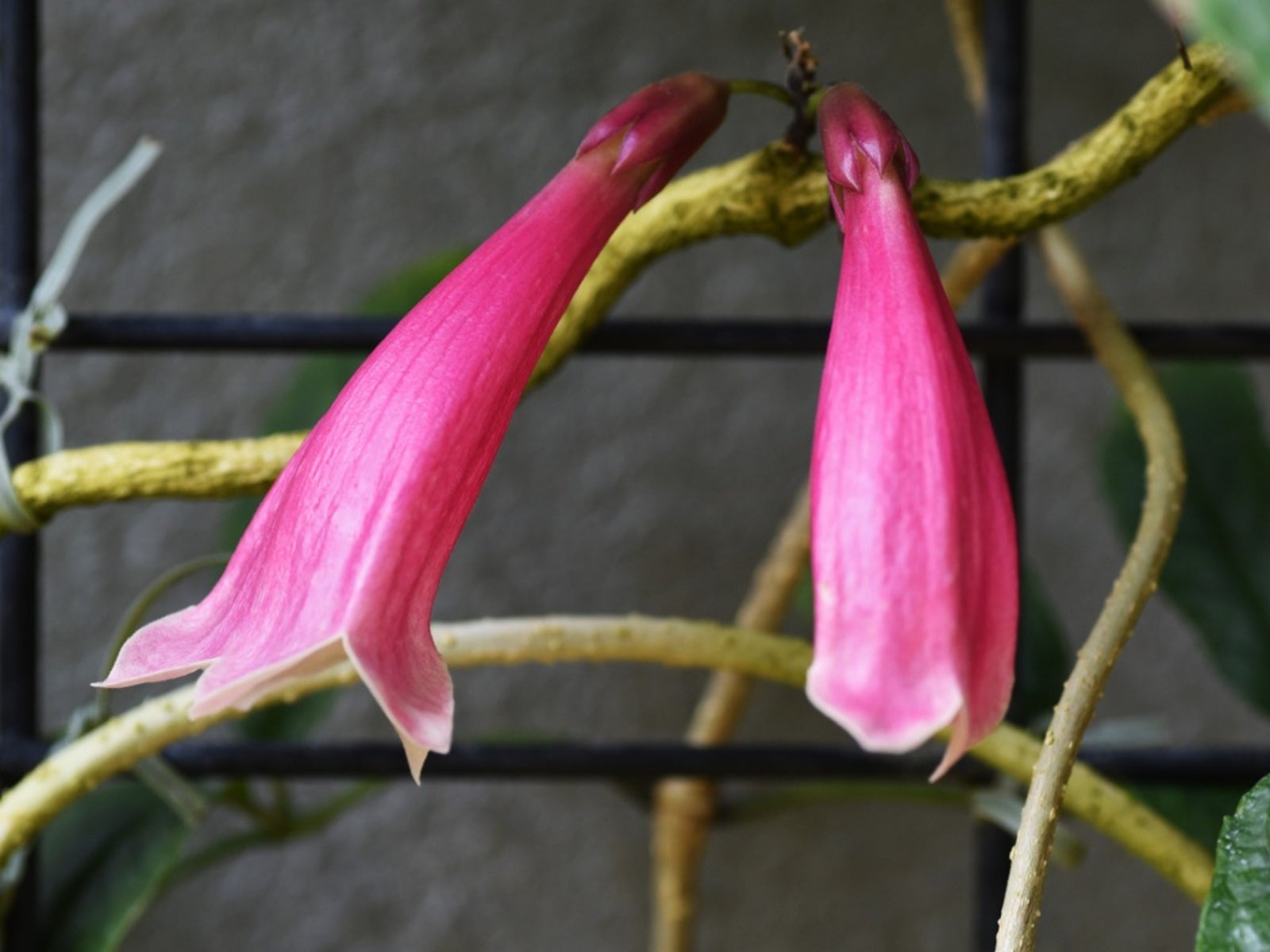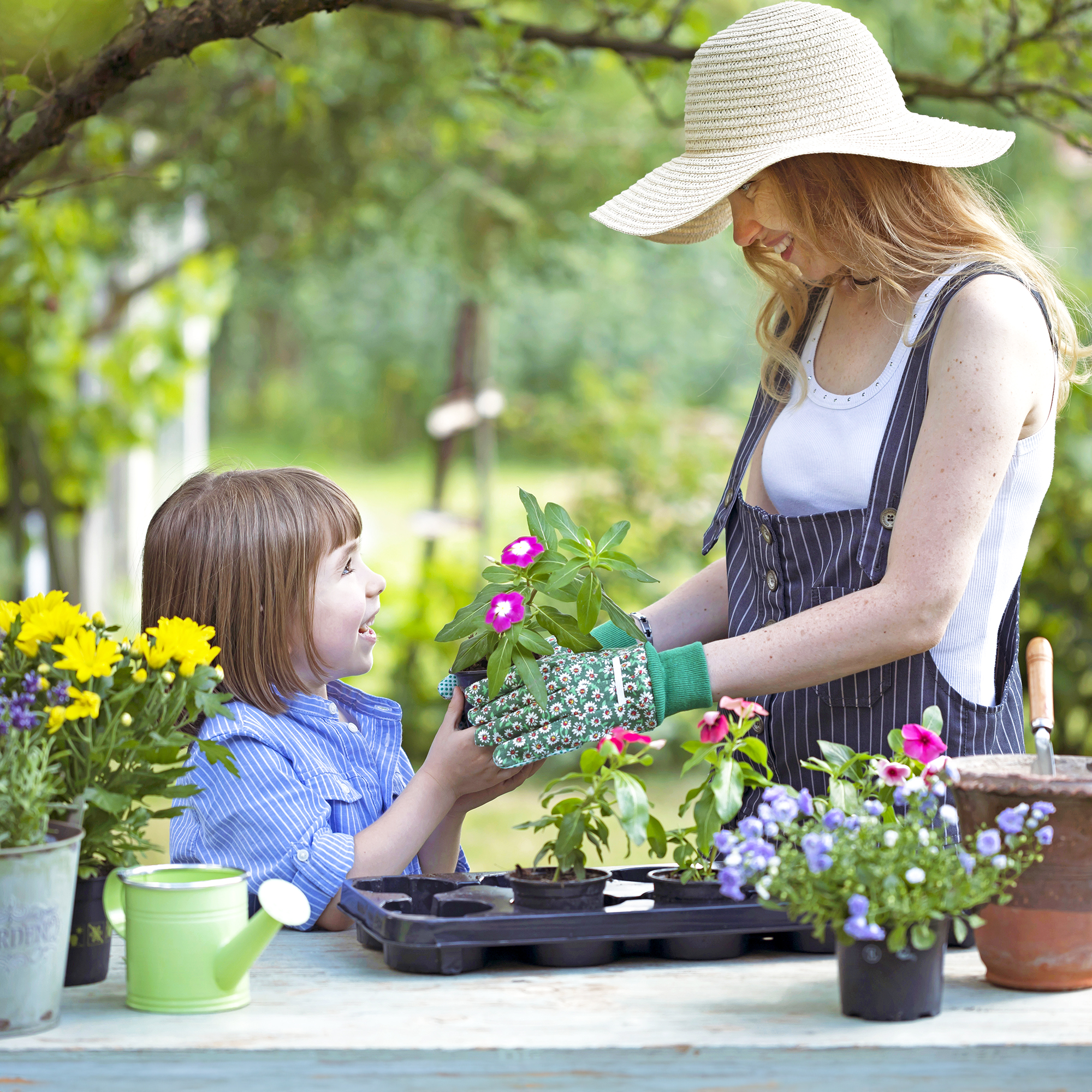Tecomanthe Petticoat Vine: Learn About Pink Petticoat Plant Care


Rampant, vigorous, trumpet-like bright pink blooms and looping stems with bright green foliage…this describes Tecomanthe venusta, or pink petticoat vine. What is a Tecomanthe vine? The plant is considered half hardy and is almost aggressive in its growth. However, if you are willing to spend some time training it, the hot pink lipstick-shaped flowers will draw gasps of awe from all who see them. And best of all, once established, the plant needs little extra care. Tecomanthe petticoat vine is perfect for warm to temperate regions where a tough, tenacious vine is required to brighten up a wall or trellis.
What is a Tecomanthe Vine?
Tecomanthe petticoat (Tecomanthe venusta) vine is also called New Guinea creeper, forest bell creeper, and New Guinea trumpet vine. The descriptive name of pink petticoat vine refers to the thickly decorated wiry stems that are coated with layers of the hot pink blooms. The plant is a fast growing evergreen vine with waxy leaves and thick flower clusters. It is a tropical plant that cannot withstand temperatures below freezing. Some tips on how to grow a pink petticoat vine should set you on the road to success, provided you don't have any freezes in your region. You won't long forget your first encounter with pink petticoat vine in bloom. Even when not in bloom, the lush foliage makes this a lovely plant but when the flowers appear, watch out! Dense clusters of narrow, bright pink blooms resemble swaying skirts of yesteryear. Vines can very quickly achieve lengths of 25 feet (8 m.) or more and will require pruning to prevent the complete takeover of an area. Growing petticoat vines requires a wall, trellis, fence, or other structure for the stems to clamber upon. The plant will self-support to some extent with the thick, wiry stems that twine around each other, creating strong material to elevate the plant.
Growing Petticoat Vines
Tecomanthe is a group of tropical rainforest plants. As such, they prefer low to medium light, humus rich soil, high humidity, and even moisture. Soil fertility should be quite high and in low nutrient soils, fertilizing annually is recommended. The plant thrives in USDA zones 10 to 11 but in cooler regions it can survive in microclimates or in protected situations with some extra care in case of freezing temperatures. Once the plant is mature, pink petticoat plant care is minimal with the exception of pruning to prevent overtaking of the garden space, occasional watering in summer, and feeding in early spring. In cold regions, grow the plant in a container and take it indoors for winter after pruning back the stems. Pink petticoat blooms from old wood, so you will not get as dramatic of a display the following year.
Pink Petticoat Plant Care
This is a remarkably self-sufficient vine. Few pests and disease issues occur. In fact, the biggest problem you may have are birds making their nests in the tangled stems. The best situation for this vine is in an area where it can be allowed to do its thing without much restraint. The elegant tangle is vigorous and may be considered by some to be invasive. If the plant is becoming a nuisance, cut back the stems severely. The plant will rally quickly and you will be able to train and manage it more effectively. Propagation is through cuttings in spring or by harvesting seed. Plants from seed can take up to five years or more before they bloom, while cuttings are much quicker. This is truly an eye-stopping specimen that will adorn your garden space for years with very little extra care.
Gardening tips, videos, info and more delivered right to your inbox!
Sign up for the Gardening Know How newsletter today and receive a free copy of our e-book "How to Grow Delicious Tomatoes".

Bonnie Grant is a professional landscaper with a Certification in Urban Gardening. She has been gardening and writing for 15 years. A former professional chef, she has a passion for edible landscaping.
-
 12 Mother’s Day Garden Gifts That Celebrate Moms Who Love To Grow
12 Mother’s Day Garden Gifts That Celebrate Moms Who Love To GrowAll Moms deserve to feel special on Mother’s Day, so treat her to a thoughtful gardening gift that helps her get the most out of her hobby.
By Melanie Griffiths
-
 Never Plant Seedlings Until They Pass These 3 Simple Tests
Never Plant Seedlings Until They Pass These 3 Simple TestsDon't be over-eager to transplant seedlings into the garden before they are ready. These quick and easy checks will help ensure flourishing plants.
By Mary Ellen Ellis